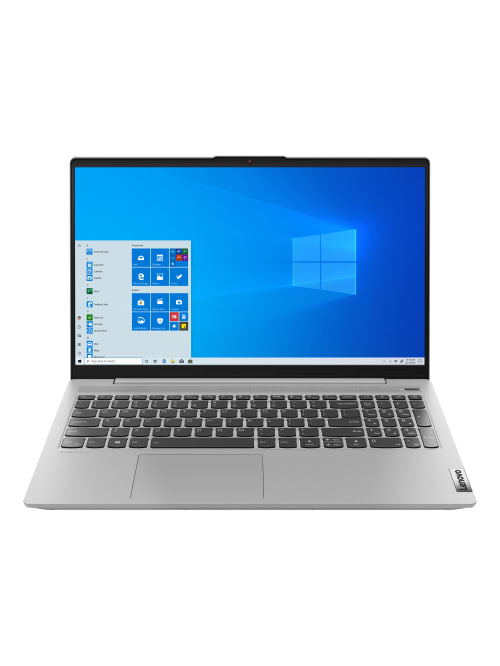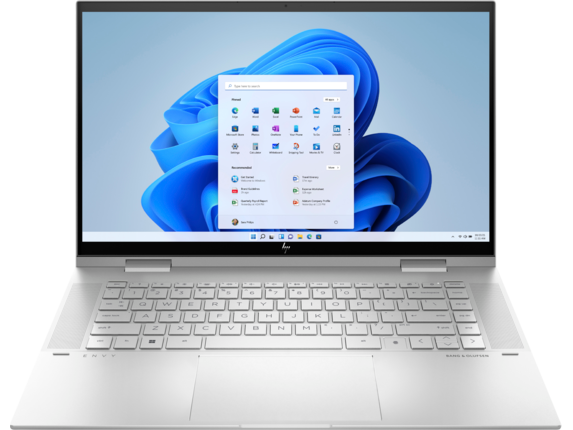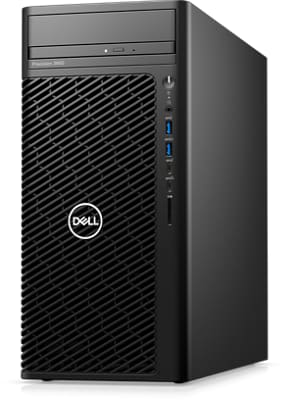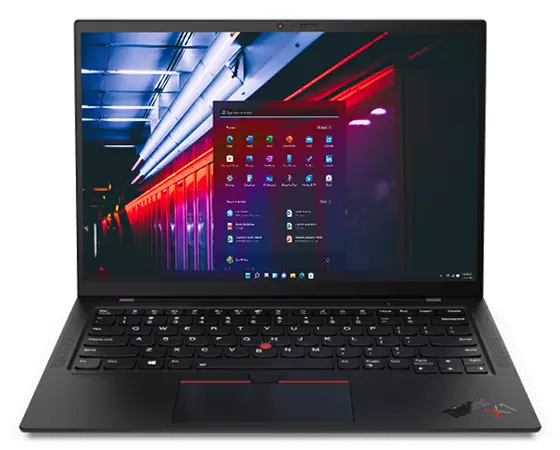Lenovo® IdeaPad 5 Laptop, 15.6″ Screen, AMD Ryzen 7, 8GB Memory, 256GB Solid State Drive, Wi-Fi 6, Windows® 10, 81YQ0003US Item # 3000410
With impressive performance, visuals and audio, the Lenovo IdeaPad 5 Laptop lets you work and play from just about anywhere. Connect to the Web and your printer wirelessly, and use the interfaces to link additional peripherals or stream content on your HDTV. With security features like a Privacy Shutter and fingerprint reader, you can enjoy greater peace of mind.
With impressive performance, visuals and audio, the Lenovo IdeaPad 5 Laptop lets you work and play from just about anywhere. Connect to the Web and your printer wirelessly, and use the interfaces to link additional peripherals or stream content on your HDTV. With security features like a Privacy Shutter and fingerprint reader, you can enjoy greater peace of mind.
- 15.6″ anti-glare LCD with FHD (1920 x 1080) resolution presents a bright, clear picture. LED backlighting provides a thinner, more energy-efficient screen.
- Powered by an AMD Ryzen 7 processor. Get the speed you need to play, work and surf the Web.
- 8GB of memory is available to run your powerful programs and games.
- 256GB solid state drive holds your songs, photos, documents and other files. Solid state drives are generally lighter, quieter, more cost-efficient and may consume less energy than the traditional hard drive
- Features Wireless-AX (802.11ax or Wi-Fi 6) for a much more enjoyable wireless experience. Key benefits of Wi-Fi 6 include 4x connected capacity, increased data throughput, and faster speeds over previous standards, making it ideal for smart homes with multiple connected devices, 4K & 8K streaming content, large file downloads & uploads, and gigabit internet speed tiers.
- Memory card reader makes file transfers fast and easy. Accepts Secure Digital™ memory cards (sold separately).
- Features 2 USB 3.1 ports for fast data transfers and 1 USB Type-C 3.1 port with DP/Power Delivery capability. USB 3.0 is up to 10 times faster than USB 2.0, yet fully compatible with USB 2.0.
- Webcam with Privacy Shutter lets you video chat with friends, family and colleagues.
- Dual speakers with Dolby® Audio deliver a rich soundscape. Headphone/microphone combo jack lets you listen privately.
- Bluetooth® technology allows you to wirelessly pair with enabled printers, speakers and other devices.
- Use the HDMI™ port to view videos and photos on your HDTV (HDMI cable sold separately).
- Numeric keypad helps speed up calculations and data entry.
- Fingerprint reader and Kensington lock provide security.
- Stays powered for up to 12 hours on a single charge. Battery life will vary depending on the product configuration, product model, applications loaded on the product, power management setting of the product, and the product features used by the customer. As with all batteries, the maximum capacity of this battery will decrease with time and usage.
- Installed with Microsoft® Windows 10.
- Backed by the manufacturer’s 1-year limited warranty.
- *Free upgrade to Windows 11 when available: Upgrade rollout plan is being finalized and is schedule to begin late 2021 and continue into 2022. Specific time will vary by device. Certain features require specific hardware. See https://www.microsoft.com/en-us/windows/windows-11-specifications.
- Energy efficient — designed to use less energy than alternative products, potentially helping you save money and reduce your carbon footprint.
Additional information
| Depth | 9-1/6 in. |
|---|---|
| Height | 3/4 in. |
| Width | 14 in. |
| Screen Size (Diagonal) | 15.6 in. |








by Steve
I bought this laptop online in May 2021 and have had no problems thus far. The main reason I bought this specific model is that I had previously bought this same exact model in September 2020. We just needed a 2nd one for our household, and since I’ve had good luck with the 1st one, I bought a 2nd one as well! Plus, the price, as before, was very competitive from Office Depot, and the online shopping experience is first rate.
by Tom
Read many different reviews on mid tier laptops and felt buying this one was a solid choice. Good sale price at the time for the features. Second Lenovo purchased and both have been great. Starts up quick and doesn’t come with a lot of programs and apps (Lenovo standard?). It’s light to carry around and looks pretty sleek. Won’t talk about the features since it’s all listed. My only complaint is that occasionally the laptop disconnects from the internet or says no internet connection. I’m not sure if that’s the laptop’s wifi antenna or the router causing issues. Leaning towards laptop since other devices don’t have an issue.
by Chris
Got this for pentesting. Wiped Windows 10 as soon as I opened up the unit and installed Ubuntu OS. Works perfectly. Also running Kali Linux from a dual boot and it handles both OS with ease. The Ryzen 7 processor is great and even under heavy usage has performed admirably. The 8 GB and 256 GB has been enough to support my needs but looking back I probably would have gotten the 16 GB and 512 GB model but that is totally a user based need. For most I feel the 8GB and 256 GB model would be more than sufficient. Other reviewers have complained about the screen. While the screen isn’t the best, I feel there has been some overly harsh criticisms. I do coding and run pentesting tools and have no trouble seeing and reading the screen (and my eyes suck) so don’t believe the “screen is impossible to see” reviews. Like I said, the screen is not a shining feature but definitely usable and about what on should expect at this price point. The battery life is adequate but nothing too impressive. I get between 5 1/2 (under heavy use) – 8 1/2 hours (under moderate use). The keyboard is one of my favorite features… Lenovo (most of the time) makes really comfortable and functional keyboards. The fingerprint scanner works flawlessly and is another great feature at this price point. The sound quality is also good but not great…sounds good enough to not count it against my rating once again considering the price point. Finally the build quality of the unit is good with one caveat. Open and close the unit gingerly. While I have not had a problem yet, the hinge that connects the screen feels like it is the cheapest part of the entire device and Lenovo has had problems over the years with screen hinges breaking…so tread lightly here and you should be fine. Finally, charging the machine….it charges reasonably fast and I haven’t had any problems in that area either. All in at this price, the Lenovo IdeaPad 5 is probably one of the better buys. You get a lot for a little and I like not having to use/ carry around my 2500$ laptop for coding and pentesting….If this is your budget or you are looking for a second laptop, I would recommend this product without hesitation.
by Holt
This is an 8 core processor based laptop. It’s up to date and current. This will run just about anything.